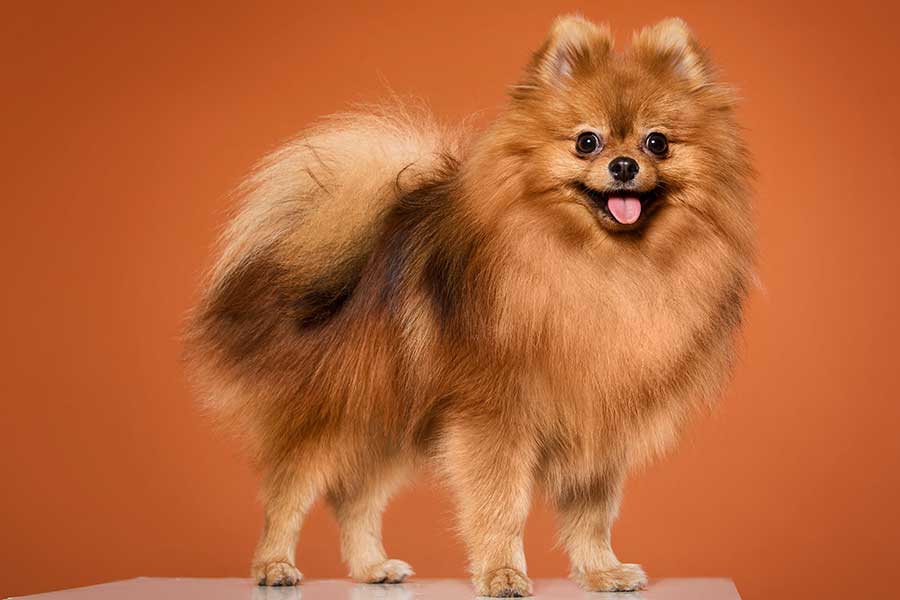Labrador Retrievers – An Overview
Labrador Retrievers, also known as Lab, is one of the most popular breeds of dogs worldwide. Their friendly and outgoing nature is their hallmark.
They are incredibly social and love spending quality time with their human mates. Being excellent with children, they are often used as therapy dogs due to their gentle behavior. Labradors are highly intelligent and enjoy learning new things, making them easy to train. They love going for walks, playing fetch, and swimming.
Labrador Retrievers are medium to large-sized dogs that can weigh anywhere between 55 to 80 pounds. They have a short, dense coat that comes in a variety of colors, including creamy yellow, chocolate, and black. Labs have a muscular build and a broad head with a friendly expression.
Overall, Labrador Retrievers make excellent companions for anyone looking for a friendly, intelligent, and loyal dog. With proper care and training, Labs can bring joy and companionship to their families for many years.
Did you know that Labrador Retrievers are America’s most beloved breed?
Labrador Retriever Basic Fact Sheet
| Height | Adult Male: 57.15-62.23 cm | Adult Female: 54.61-59.69 cm |
| Weight | Adult Male: 65-80 pounds | Adult Female: 55-70 pounds |
| Origin | Newfoundland (a Canadian province) | Brought to England in the 19th century |
| Coat Color | Creamy yellow, Chocolate, and Black | Short, Dense, Water-resistant Coat with minimum Drooling |
| Temperament | Friendly, Outgoing, Caring | Love going for walks, playing fetch, and swimming |
| Life Span | 11-13 years | This makes them a robust and healthy breed of dogs |
| Build | Muscular | Medium to large-sized, muscular build with a broad head |
| Activity level | High | Highly playful and energetic |
| Adaptability Level | High | Make excellent companionship |
| Training Level | High | Highly intelligent and enjoy learning new things |
| Expressions | Friendly | Loveable, welcoming, and enthusiastic |
Labrador Retrievers are the perfect guide dogs: intelligent, loyal, patient, and reliable. They have a proven track record of helping people in need, and their gentle nature makes them perfect companions.
History of Labrador Retrievers

The Labrador Retriever breed boasts a fascinating history that dates back to the 18th century in Newfoundland, Canada. Fishermen initially bred these dogs to retrieve fishing nets and escaped fish due to their exceptional swimming ability and diligent nature. The breed’s genetic makeup includes influences from the now-extinct St. John’s Water Dog, which was also used for retrieving.
In 19th century England, the breed was further developed and standardized for retrieving game birds during hunts. Labrador Retrievers quickly gained popularity and were used for various other tasks, including search and rescue, therapy work, and guide dogs for the blind.
Despite their name, Labrador Retrievers did not originate from Labrador, but rather from Newfoundland. However, the name was adopted because they were often seen working in the Labrador Sea.
The breed was officially recognized by the English Kennel Club in 1903 and by the American Kennel Club in 1917.
Did you know that Labrador Retrievers absolutely adore swimming? It’s one of their favorite pastimes!
Characteristics of Labrador Retrievers

Labrador Retrievers (Lab) are undoubtedly one of the most versatile and popular breeds of dogs, and they possess many highly desirable characteristics too. Their friendly, outgoing personality, intelligence, and unwavering loyalty are well-known and widely recognized. Let’s delve deeper into the exceptional characteristics of these remarkable dogs.
How Do Labrador Retrievers Look Like?
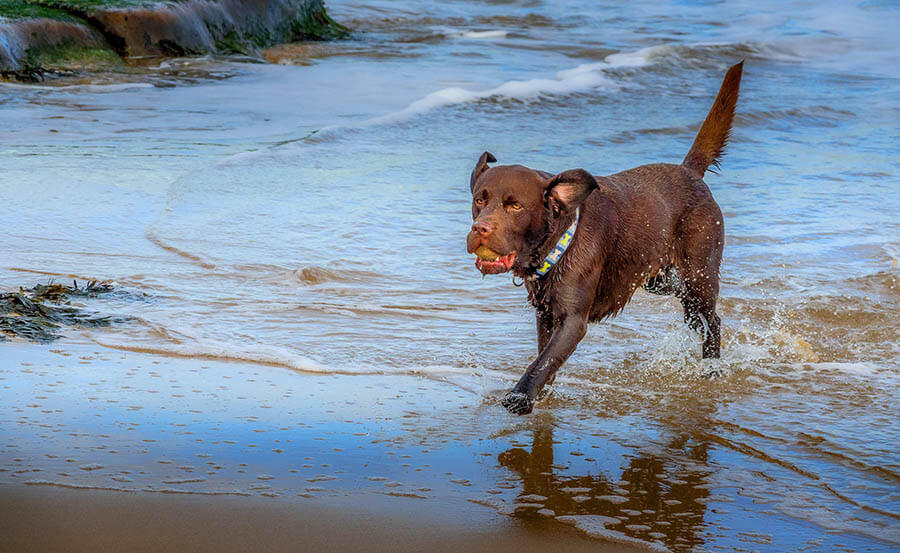
Labrador Retrievers or Lab are medium to large-sized dogs, with males typically weighing between 65-80 pounds and females between 55-70 pounds. They have a strong, athletic build, contributing to their abilities as a working and sporting breed. Labs have a short, dense, and water-resistant coat in three standard colors: black, yellow, and chocolate.
Their heads are broad with a pronounced stop, and they have kind, expressive eyes that are usually brown or hazel. Their ears are not too large, hanging close to heads. Labs have a distinctive tail, which is thick at the base and tapers towards the tip.
They shed moderately throughout the year, and more heavily during shedding season. However, regular grooming can help reduce shedding and keep their coat shiny and healthy.
Temperament of Labrador Retrievers

Labrador Retrievers’ cool temperament is their hallmark. They are gentle, patient, highly social, and affectionate, making them excellent family pets. Besides, they are very good with children and other animals, which makes them a popular choice for families with kids or multiple pets.
Despite their size, Labs are often described as ‘lap dogs’ due to their love of cuddles and close contact with their owners. They are also known for their energy and enthusiasm, which means they require plenty of exercise to keep them happy and healthy.
Are Labrador Retrievers Intelligent?
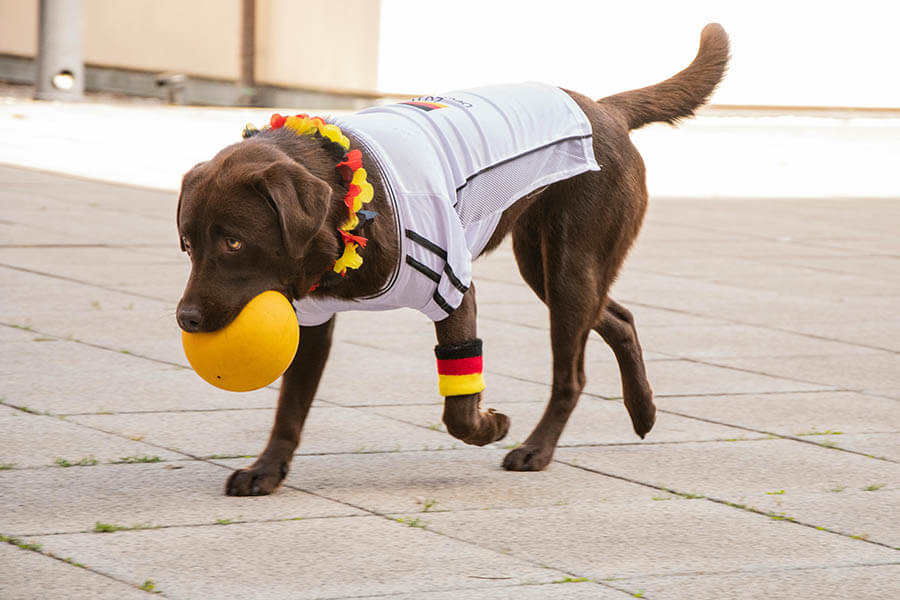
Labrador Retrievers have exceptional intelligence, trainability, and work ethic. With an instinctive desire to work, you will always find them highly motivated to perform different tasks.
What’s more, they are quick learners and excel in obedience training, which makes them ideal candidates for hunting dogs or search and rescue dogs, as well as other specialized training programs.
Health and Life Expectancy
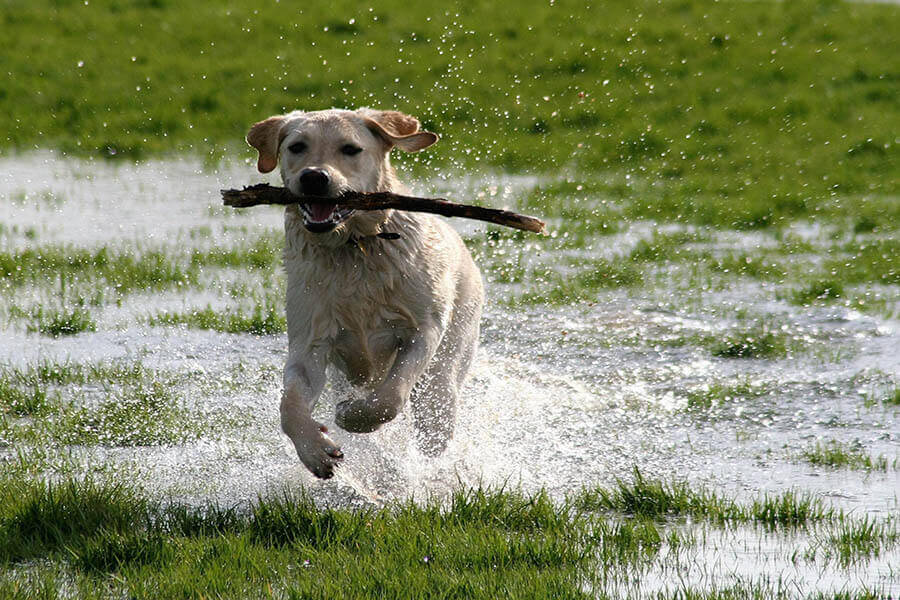
Generally, Labrador Retrievers are a robust and healthy breed of dog, with a life expectancy ranging from 11 to 13 years.
They are typically free from major health issues throughout their lives. Their overall health and longevity are due to their active lifestyle and well-balanced diet.
Regular vet visits, exercise, and proper grooming can help ensure that they remain healthy and happy for many years to come.
Labrador Retrievers are the ultimate scent-detecting machines! With their incredible sense of smell, they can detect even the faintest of scents in an instant. You won’t find a better companion for hunting, search and rescue operations, or as a loyal family pet!
Labrador Retrievers – Care Tips
Labrador Retrievers are lovable, friendly, and active dogs. Regular exercise and a balanced diet keep them thriving. They also need regular grooming, including brushing their coat and cleaning their ears.
Besides regular vet visits to prevent any potential health issues, provide your Labrador Retriever with a comfortable living space and plenty of attention and affection.
Diet and Nutrition Requirements of Labrador Retrievers
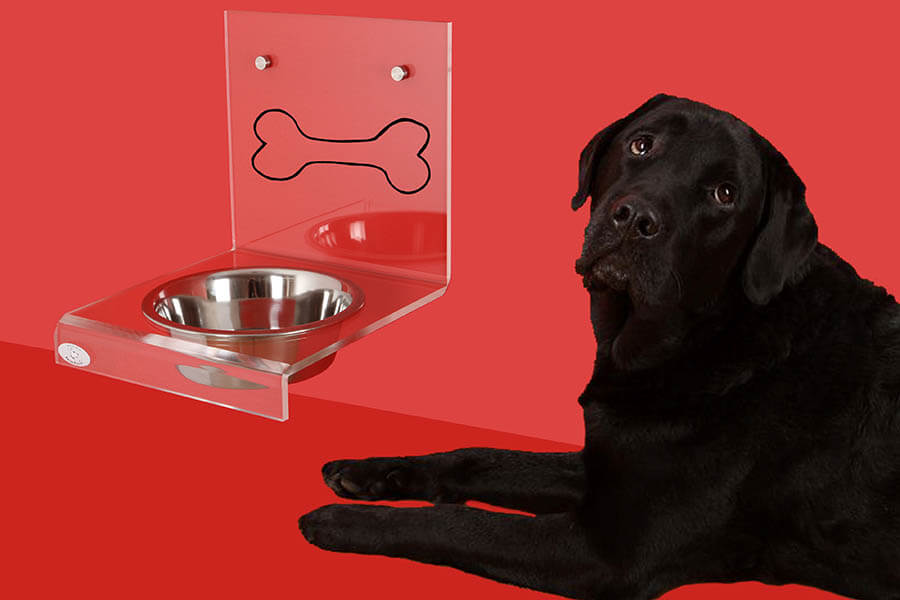
Like all dogs, Labrador Retrievers require a balanced diet to stay healthy. This should include high-quality protein sources, carbohydrates, fats, vitamins, and minerals.
Keep monitoring your Lab’s weight as they are prone to obesity, which can lead to health problems such as diabetes and joint issues.
When feeding your Lab, consider their age, size, activity level, and health status. Puppies require more frequent meals and a diet rich in nutrients for growth and development, while older dogs may need fewer calories to prevent weight gain. However, we highly recommend consulting with your vet for specific dietary advice for your Labrador Retriever.
Labrador Retrievers Thrive on Exercise and Training
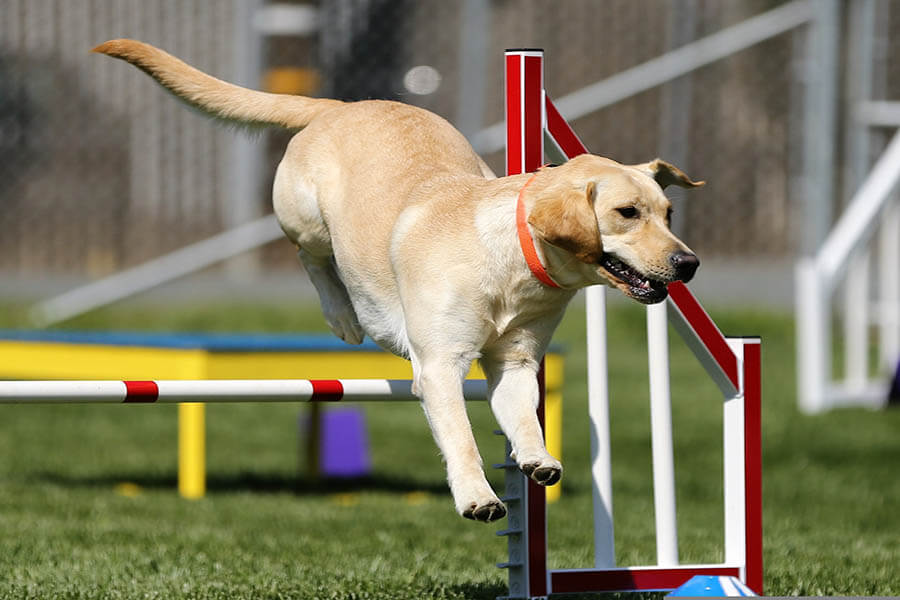
Labrador Retrievers are a highly active and energetic breed of dogs that thrive on regular exercise. They possess boundless energy and enthusiasm, which makes them excellent companions for people who enjoy an active lifestyle.
Labs are social dogs that thrive on human interaction and affection. Spend quality time with them every day. Provide them with a variety of exercise options, such as walks, runs, swimming, fetch games, and agility training.
Regular exercise not only helps to keep your Labrador physically fit but also mentally stimulated. Labs are intelligent dogs that require mental stimulation to prevent boredom and destructive behavior. You can provide your Labrador with mental stimulation by incorporating training sessions into their exercise routine.
Training should start from a young age and include basic obedience, socialization, and specific skills or tasks. We highly recommend positive reinforcement training methods, as Labrador Retrievers are eager to please and respond well to praise and rewards.
Health and Wellness Needs of Labrador Retrievers
Labrador Retrievers are generally healthy and have a life expectancy of 11 to 13 years. However, like all other breeds, they can be prone to certain health conditions.
One of the most common conditions that Labradors can develop is hip and elbow dysplasia. This condition occurs when the hip or elbow joint does not develop properly, which can cause pain, stiffness, and difficulty moving.
Another common health issue is eye conditions such as progressive retinal atrophy. It is an inherited disease that causes gradual vision loss and can lead to blindness.
Finally, Labrador Retrievers can also suffer from heart conditions, such as dilated cardiomyopathy, which can lead to heart failure.
Regular vet check-ups and preventative care can help to catch and manage these conditions early. For example, hip and elbow dysplasia is detectable through X-rays. Early intervention can help to slow down or even prevent the progression of the disease.
Eye conditions can also be detected through regular eye exams, and early treatment can help to preserve vision.
Heart conditions can be detected through a variety of diagnostic tests, and treatment options can be discussed with your veterinarian to help manage the condition.
Grooming Needs of Labrador Retrievers

Labrador Retrievers have a thick, dense coat that is resistant to water. To keep their coat in good condition, regular grooming is vital.
This includes brushing their fur to remove loose hair and prevent matting, as well as bathing them as needed. We also recommend using a dog shampoo that is specifically formulated for their coat type. When bathing your Lab, make sure to thoroughly rinse off all shampoo to avoid any skin irritation.
Have regular checkups on your Labrador Retriever’s ears and teeth. Keeping their ears clean and dry can help prevent ear infections. Consult with a veterinarian to have recommendations for an ear-cleaning solution that is safe for your Labrador Retriever’s ears.
As for their teeth, regular cleaning can help prevent dental issues such as tartar buildup, tooth decay, and gum disease. You can use a dog toothbrush and toothpaste to clean their teeth or provide them with dental chews or toys that promote oral hygiene.
Did you know that Labrador Retrievers are awesome swimmers? They just love to dive in and paddle around, it’s amazing to watch!
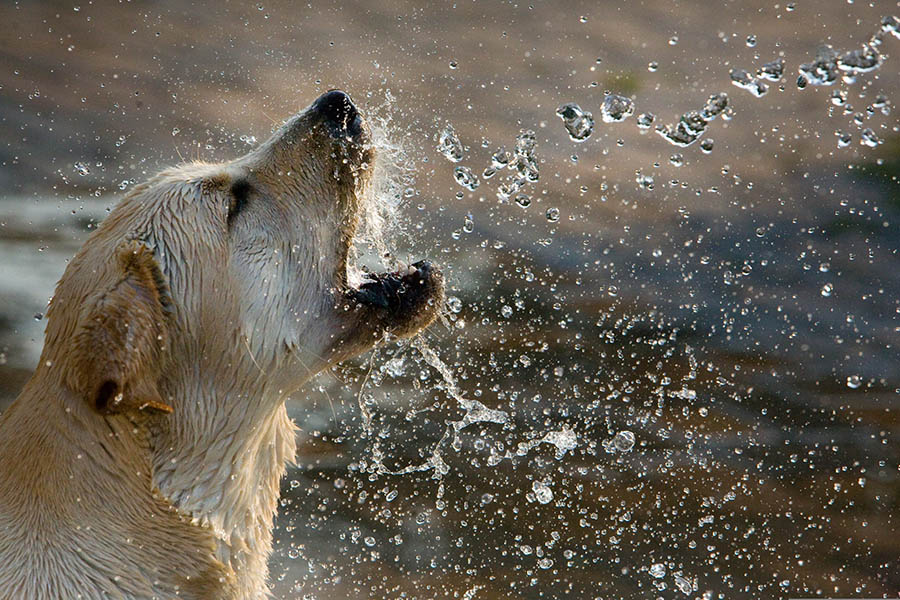
Let’s Wrap it Up
Labrador Retrievers are a versatile breed of dog with friendly and loving nature. They are highly intelligent and trainable dogs. Glory (Ene) Sunday Glory (Ene) Sunday is a Veterinary Surgeon with extensive experience in animal clinical practice and a deep understanding of OneHealth. She is dedicated to elevating animal well-being through cost-effective disease prevention strategies. Proficient in animal nutrition, treatment, surgery, and diagnostics, she is passionate about empowering pet lovers/communities with cutting-edge approaches related to pet/animal health and well-being.
However, owning a Labrador Retriever requires a lot of responsibility and commitment. They require regular exercise, grooming, mental stimulation, and a balanced diet to keep them healthy and happy.
Being an active breed that loves to play and explore, they require daily walks and playtime to burn off their energy. Their intelligence requires mental stimulation to prevent boredom and destructive behavior.
Labrador Retrievers are highly adaptable dogs and excel in various roles, from family pets to working dogs. However, they require a lot of care and attention to keep them happy and healthy.
DVM | Expert in Animal Nutrition and Planning









